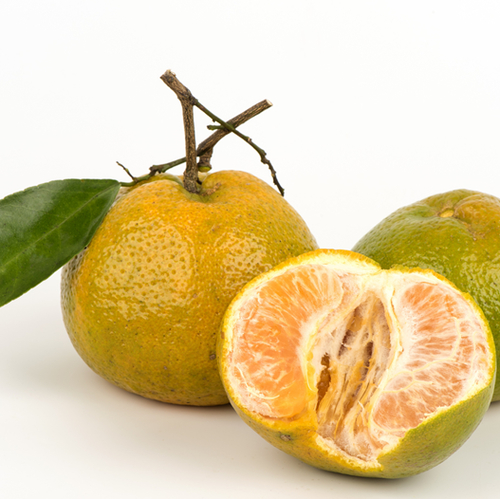
Background
Over 4000 different flavonoids have been identified from various plant sources. Common food sources include red wine, stems, flowers, fruits, vegetables, nuts, seeds, herbs, spices, coffee, and teas.
Methoxylated flavones are used for poor circulation in the legs (venous insufficiency), varicose veins (enlarged veins that appear on the skin), heart disease, high cholesterol, cataracts, cancer, and other conditions, but there is no good scientific research to support any of these uses.
Safety Safety definitions
Special Precautions & Warnings:
Pregnancy and breast-feeding: Methoxylated flavones are LIKLEY SAFE for pregnant and breast-feeding women when used as part of the diet. But there isn't enough reliable information to know if methoxylated flavones are safe to use in amounts greater than those commonly found in foods when pregnant or breast-feeding. Stay on the safe side and stick to food amounts.Surgery: Methoxylated flavones can slow blood clotting. There is some concern that they might increase the risk of bleeding during and after surgery. Stop taking methoxylated flavones supplements at least 2 weeks before a scheduled surgery.
Effectiveness
- Poor circulation that can cause the legs to swell (chronic venous insufficiency or CVI).
- Varicose veins.
- Heart disease.
- High cholesterol.
- Cataracts.
- Cancer.
- Other conditions.
Dosing & administration
Interactions with pharmaceuticals
Medications changed by the liver (Cytochrome P450 1A2 (CYP1A2) substrates)
Interaction Rating=Moderate Be cautious with this combination.
Some medications are changed and broken down by the liver. Methoxylated flavones might increase how quickly the liver breaks down some medications. Taking methoxylated flavones along with some medications that are changed by the liver might decrease the effects of some medications. Before taking methoxylated flavones, talk to your healthcare provider if you take any medications that are changed by the liver.
Some of these medications that are changed by the liver include clozapine (Clozaril), cyclobenzaprine (Flexeril), fluvoxamine (Luvox), haloperidol (Haldol), imipramine (Tofranil), mexiletine (Mexitil), olanzapine (Zyprexa), pentazocine (Talwin), propranolol (Inderal), tacrine (Cognex), theophylline, zileuton (Zyflo), zolmitriptan (Zomig), and others.
Medications changed by the liver (Cytochrome P450 3A4 (CYP3A4) substrates)
Interaction Rating=Moderate Be cautious with this combination.
Some medications are changed and broken down by the liver. Methoxylated flavones might decrease how quickly the liver breaks down some medications. Taking methoxylated flavones along with some medications that are changed by the liver might increase the effects and side effects of some medications. Before taking methoxylated flavones, talk to your healthcare provider if you take any medications that are changed by the liver.
Some medications changed by the liver include lovastatin (Mevacor), ketoconazole (Nizoral), itraconazole (Sporanox), fexofenadine (Allegra), triazolam (Halcion), and many others.
Medications moved by pumps in cells (Organic anion-transporting polypeptide substrates)
Interaction Rating=Moderate Be cautious with this combination.
Some medications are moved in and out of cells by pumps. Methoxylated flavones might change how these pumps work and change how much medication stays in the body. In some cases, this might change the effects and side effects of a medication.
Medications moved by pumps in cells (P-Glycoprotein substrates)
Interaction Rating=Moderate Be cautious with this combination.
Some medications are moved by pumps in cells. Some methoxylated flavones might change how these pumps work and increase how much of some medications get absorbed by the body.
Some medications that are moved by these pumps include etoposide, paclitaxel, vinblastine, vincristine, vindesine, ketoconazole, itraconazole, amprenavir, indinavir, nelfinavir, saquinavir, cimetidine, ranitidine, diltiazem, verapamil, corticosteroids, erythromycin, cisapride (Propulsid), fexofenadine (Allegra), cyclosporine, loperamide (Imodium), quinidine, and others.
Medications that slow blood clotting (Anticoagulant / Antiplatelet drugs)
Interaction Rating=Moderate Be cautious with this combination.
Some methoxylated flavones might slow blood clotting. Taking methoxylated flavones along with medications that also slow clotting might increase the chances of bruising and bleeding.
Some medications that slow blood clotting include aspirin, clopidogrel (Plavix), diclofenac (Voltaren, Cataflam, others), ibuprofen (Advil, Motrin, others), naproxen (Anaprox, Naprosyn, others), dalteparin (Fragmin), enoxaparin (Lovenox), heparin, warfarin (Coumadin), and others.
Interactions with herbs & supplements
Some of these herbs are angelica, clove, danshen, garlic, ginger, ginkgo, red clover, turmeric, vitamin E, willow, and many others.
Licorice: Taking licorice with methoxylated flavones might decrease how much methoxylated flavones stay in the body. This might reduce the effects of methoxylated flavones.


